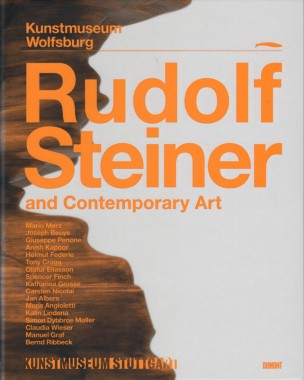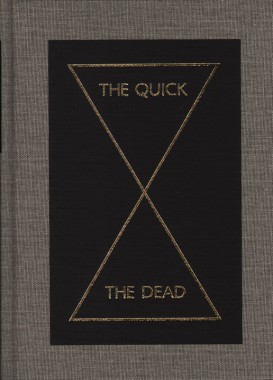Rudolf Steiner and Contemporary Art
Markus Brüderlin and Ulrike Groos, Rudolf Steiner and Contemporary Art
Hardcover, 224 pp., offset 4/4, 240 x 315 mm
Edition of 5000
ISBN 978-3-8321-9278-5
Published by Dumont Buchverlag
$60.00 ·
At once a philosopher, educational and medical reformist, mystic and artist, Rudolf Steiner (1861-1925) was the founder of a spiritual movement he dubbed Anthroposophy, and of the famous school system that bears his name. Anthroposophy combined elements of German philosophy with Theosophical theory, and also made use of architecture, dance (Eurthymy), painting and sculpture to illustrate his ideas. Steiner’s artworks occupy a fascinatingly ambiguous status as both pedagogical and aesthetic entities, and served as springboards for the early work of Mondrian and Kandinsky among others; they have continued to influence artists down the generations. In 1992, Steiner’s panel drawings were exhibited at the Galerie Monika Sprüth in Cologne, renewing their efficacy for contemporary artists. Published for the Kunstmuseum Wolfsburg’s 2010 exhibition, this book is the first assessment of the influence of Anthroposophical thought on contemporary art.
The Quick and the Dead
Peter Eleey, The Quick and the Dead
Hardcover, 352 pp., offset 4/1, 6.75 x 9 inches
Edition of 2000
ISBN 9780935640939
Published by Walker Art Center
$45.00 ·
Artists have always used their imaginations to see beyond visible matter — to posit other physics, other energies, new ways of conceiving the visible and new models for art — but the past century has seen an explosion of such investigations. In the fashion of a Wunderkammer, The Quick and the Dead takes stock of the 1960s and 70s legacy of experimental, or “research” art by pioneers like George Brecht, who posited objects as motionless events and asked us to consider “an art verging on the non-existent, dissolving into other dimensions,” and Lygia Clark, whose foldable sculptures sought to dissolve the boundary between inside and outside, each “a static moment within the cosmological dynamics from which we came and to which we are going.” In a series of encounters with art made strange by its expansions, contractions, inversions and implosions in time and space, The Quick and the Dead surveys more than 80 works by a global, multigenerational group of 50 artists, scientists and musicians — among them James Lee Byars, Joseph Beuys, Marcel Duchamp, Harold Edgerton, Ceal Floyer, Felix Gonzalez-Torres, Pierre Huyghe, The Institute for Figuring, Paul Ramirez Jonas, Stephen Kaltenbach, On Kawara, Christine Kozlov, David Lamelas, Louise Lawler, Paul Etienne Lincoln, Mark Manders, Kris Martin, Steve McQueen, Helen Mirra, Catherine Murphy, Bruce Nauman, Rivane Neuenschwander, Claes Oldenburg, Roman Ondák, Adrian Piper, Roman Signer and Shomei Tomatsu, among many others. Includes reprints of texts by diverse luminaries such as John McPhee, Jalal Toufic, Oliver Sacks, Allan Kaprow and Robert Smithson.

